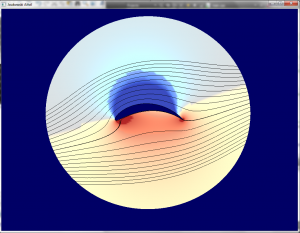I never met my first boss. This happened 15 years ago; the shock, the sadness, and his sister’s voice on the phone are still here. Thanks for the opportunity Mr. Carlson; I’m sorry that we never met.
From the NTSB accident report:
NYC00LA141
On May 24, 2000, about 0930 Eastern Daylight Time, a homebuilt Criquet, N22CA, was destroyed while departing Aero Flight Center Airport, East Palestine, Ohio. The certificated private pilot/owner was fatally injured. Visual meteorological conditions prevailed, and no flight plan was filed for the local personal flight conducted under 14 CFR Part 91.
A witness at the airport stated that the pilot initially performed a full power run-up, then shut the engine down. The pilot told the witness that the engine was producing 50 to 100 rpm less than maximum power. The pilot adjusted the carburetor, restarted the engine, and performed another run-up. During the second run-up, he checked both magnetos, but did not perform a full power run-up. The airplane then departed on Runway 29, a 3,000 foot long, 100 foot wide turf runway.
The witness added that the airplane usually used about “half the runway” to takeoff. On the accident flight, the airplane used about “three quarters of the runway.” It then made a right turn to avoid trees, but struck a tree with the right wing. The airplane came to rest inverted in a bean field, and a post crash fire ensued. While examining the wreckage with a Federal Aviation Administration (FAA) inspector, the witness stated that the supercharger appeared to be disengaged.
Another witness, who was a retired mechanic, stated that he was familiar with the airplane. The airplane’s engine was a Lom Praha M332AK, manufactured in the Czech Republic. Several months before the accident, the pilot noticed the engine was not producing maximum power. The mechanic examined the engine, and found a leak in the exhaust valve of a cylinder. The cylinder was repaired at a machine shop and reinstalled; however, the engine still did not produce maximum power.
The pilot eventually sent the engine back to the manufacturer for repair. While the engine was being repaired, the manufacturer provided the pilot with a “loaner” engine. The mechanic stated that the airplane performed much better with the “loaner” engine, and the pilot never had any problems.
The pilot’s original engine was returned without any paperwork. According to the mechanic, he and the pilot did not know what repairs were made to the engine. The pilot and mechanic reinstalled the original engine.
On the day of the accident, the pilot performed one run-up near his hangar. He performed a second run-up at the end of the runway that lasted approximately 20 minutes. The mechanic stated that the airplane used about “two thirds of the runway” for takeoff. As it became airborne, the engine “sounded ok,” but the airplane did not seem to have enough airspeed or altitude. It struck trees at the end of the runway and a fire ensued.
When asked about the lack of power, the mechanic stated that there might have been something wrong internally with the engine. He said that he wasn’t sure, but that the engine was “lazy.” When asked about the supercharger, the mechanic stated that the pilot may not have engaged it. He added that the supercharger didn’t make a noticeable difference when it was engaged or disengaged.
A Federal Aviation Administration inspector examined the wreckage. He stated that due to the post crash fire, he was unable to verify flight control continuity or conduct an engine examination.
The airplane was issued a temporary, 3 month, special airworthiness certificate on May 27, 1999, by a FAA inspector. After the certificate expired, and the original engine was reinstalled, no FAA inspector had examined the airplane.
At 0950, at an airport approximately 10 miles away, the reported wind was from 250 degrees at 15 knots.
The pilot’s most recent FAA third class medical certificate was issued on August 17, 1996. At that time, he reported a total flight experience of 2,000 hours. According to the airplane logbook, it had approximately 8 hours of operation.
Toxicological testing, conducted at the FAA Toxicology Accident Research Laboratory, Oklahoma City, Oklahoma, was negative for drugs and alcohol.







